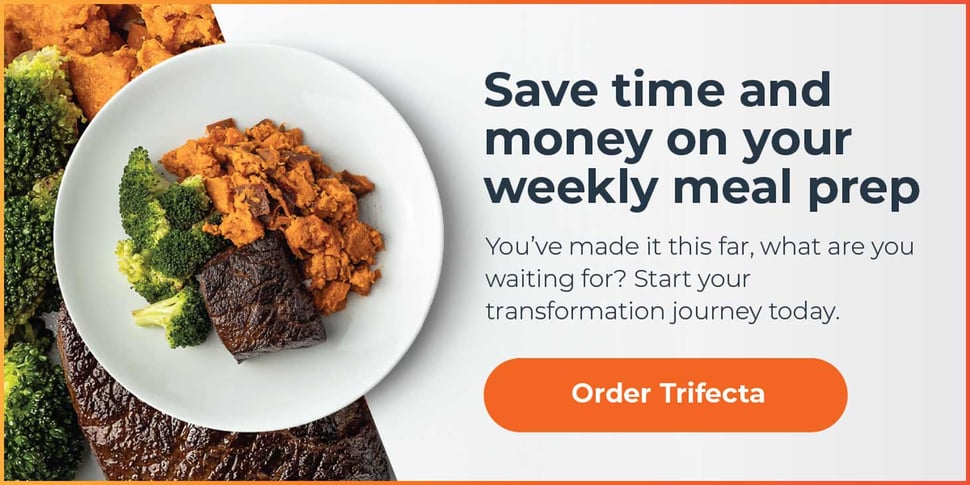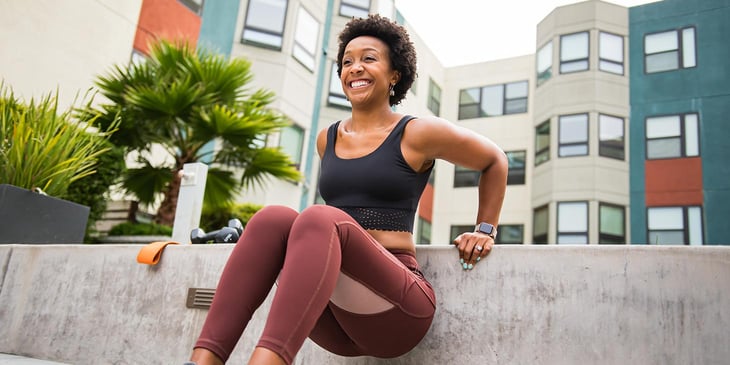Functional fitness. You’ve heard the term, you’ve seen the hashtags on Instagram, and countless influencers preach the benefits of this trendy training method to get you in the best shape of your life.
But what does “functional fitness” even mean, what does an exercise look like, and how can you incorporate it into your routine? Here's the information that you've been looking for. We'll break down what functional fitness is, how you can incorporate it into your life, give you a breakdown of popular movements, and provide you with a workout to get started.
What Is “Functional Fitness"?
The term “functional fitness” is used to promote the idea that strength training and muscle memory built during workouts will translate into everyday life.
In our everyday lives, we need strength, mobility, and balance.
Doing exercises that incorporate these components, not only improves your overall fitness but also increases a person's ability to live a higher quality life.
Although functional fitness has been designated as a specific type of workout, most people do functional fitness exercises whether they realize it or not. In fact, every exercise can be functional in some capacity. Some of the most functional moves around are staples in an average person’s regimen.
For an athlete, a functional fitness program might mean utilizing movements that replicate the motions in their respective sport, thus helping them improve their performance. Of course, there are also incredible benefits to incorporating these types of exercises into your life.
Functional fitness training also emphasizes the notion of working out to feel better overall rather than to look a certain way.
CrossFit™ was one of the first brands to promote that way of thinking. Opting for workouts that improve your overall health and fitness is a goal that anyone can strive for.
Can I Do Functional Fitness if I Like to Lift Weights?
Yes, functional fitness exercises are perfect for anyone - even if you like to do bodybuilding.
The powerlifting Big Three—squats, deadlifts, and bench presses—are tried and true strength builders. And there are plenty of other exercises that are great for optimizing your fitness - from lunges and rows, to planks and step-ups, countless options fall into the functional fitness category.
Once you decide what your specific goal is, you can narrow down the movements that can help you meet it.
There’s a wide range of exercises that can be considered functional, and they can be scaled up or down depending on a person’s skill level. But on the whole, they focus on utilizing bodyweight movements, free weights, and can incorporate tools like medicine balls, barbells, and dumbbells.
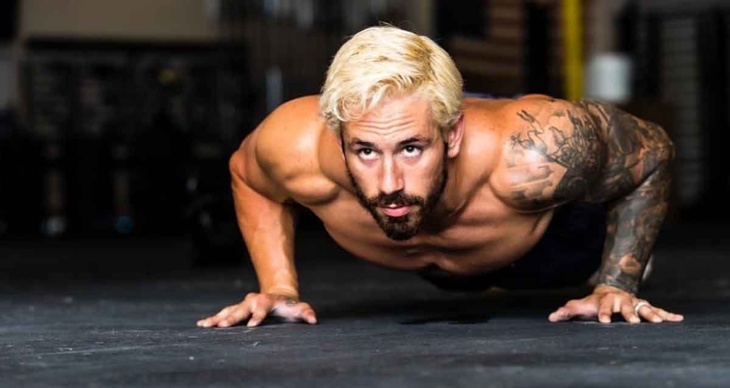
What Are the Benefits of Functional Training and Why Should I Do It?
Whether your goal is to lose weight, gain muscle, or improve your overall fitness, the elements of this style of training can help you achieve your goal.
The components of the training method emphasize improving your ability to perform real life movements seamlessly. From walking up a flight of stairs to putting on a pair of shoes, training your body in the movement patterns it does daily, will help make those activities easier.
Functional training includes using multiple muscle groups simultaneously to help them work together for daily activities, and the workouts benefit improved strength, mobility, balance.
Improved Strength
Making your muscles stronger is a part of helping you live a higher quality life.
With stronger muscles a person can not only move things easier, but also increase their Total Daily Energy Expenditure (aka with larger muscles, you can eat more food)!
Functional training can be done to help you gain muscle by performing the exercises with weights. As your body becomes more proficient in a movement, adding more resistance will help you build more muscle. And if fat loss is your goal, functional training can help you with efficiently burning calories.
More Mobility
Fitness isn't just how strong you are, it requires how well your body can move and perform tasks as hand. This is when mobility comes into play.
Overall, mobility makes movement easier throughout the day. Incorporating movements that require using your body in familiar motions increases your body’s ability to move together with ease.
Think of standing out of a chair - what exercise is that similar to?
If you guessed squats, then you're right. Performing sets of back squats isn't just great to build your muscles, they’re perfect for increasing your overall mobility.
Increased Balance
How many times have you gone to pick something up and had to readjust how you grab it? That’s your body’s way of telling you that your balance is off.
Exercises in functional training often involve using your muscles together to improve your balance. From keeping your midline tight and arms up to perform a front squat to holding a plank, functional training will help increase your body's balance and stamina over time.
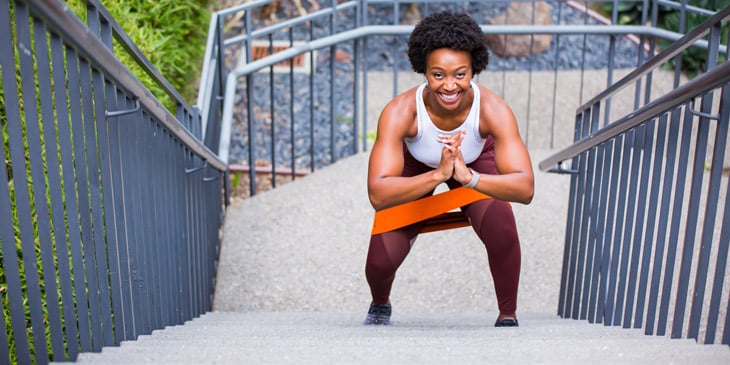
How You Can Easily Add Functional Fitness Into Your Workout?
Now that you have a basis for what functional fitness is, let’s talk about how you can incorporate it into your workout routine.
A common misconception is that when a person starts a new workout routine they should immediately do high-intensity exercises. This is not true and will likely lead to injury.
It’s particularly false when you consider that some of the most comprehensive, total-body functional fitness moves require impeccable form and should be practiced with a qualified trainer (at least in the beginning) to prevent injury. The least functional move of all is getting injured.
A couple of the functional training movements you've likely seen people on social media do are the Olympic weightlifting movements of the Clean and the Snatch.
The Clean involves pulling your weight of choice up from the floor and catching it at your shoulders. The Snatch involves pulling the weight from the floor and throwing it overhead.
While these may sound easy, they are highly intricate movements that should be properly taught with the assistance of trainer or coach. Both of the movements require triple extension, which is when the ankles, knees, and hips are all extended at once to produce force. Think of jumping up to shoot a basketball or spike a volleyball, for instance.
If you’re not ready to dive into the waters of any Olympic weightlifting program just yet, that’s okay. While those are touted as the kings of functional movements, you can (and should) build up to them step by step.
Your fitness program should be designed to help you achieve your goals and suit your individual capabilities.
If you're a beginner, then start with bodyweight movements. As you progress in your ability and range of motion, try adding in weights or more complex exercises or increase your total number of reps to workout under fatigue.
The 7 Most Popular Functional Exercise Movements
No matter your fitness level, here are 7 of the best functional fitness movements for you to add into your workout routine. Many of these movements can be done at home or in the gym with weights for a more advanced person.
The benefits of these movements is that they are each compound exercises that will help to not only improve your fitness but also everyday activities.
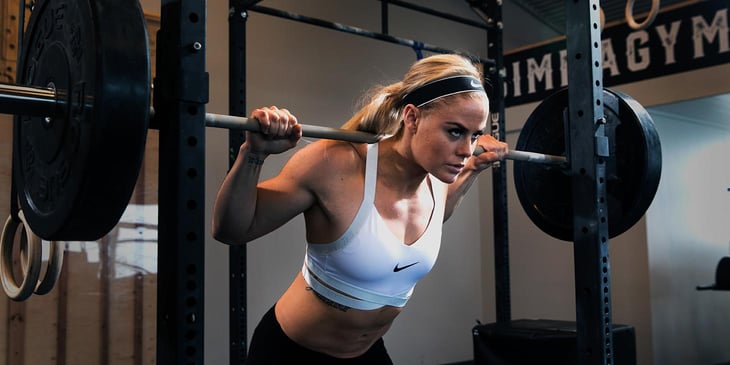
1. Squats - 3 Sets of 10
From bodybuilding to functional fitness athletes and exercise enthusiasts alike, squats are a favorite movement amongst many for good reason. It's not just because they help build muscles, but because they are a daily functional exercise used in real life.
The squat incorporates core strength, balance, and mobility all in one simple motion.
Beginner Squats
- Feet slightly wider than shoulder width apart
- Toes pointed slightly outwards
- Brace your core and slowly move downward into a seated position
- Keep chest up and weight through middle of foot
- Continue until knees break 90 degrees
- Push through foot to stand-up at full hip extension
Advanced One Legged Squats
- Place one leg in front of your body and off of the ground
- Lower down to the ground with the other foot until your knee breaks 90 degrees
- Keep your opposite foot off of the floor
- Stand up and place the leg back on the ground
- Complete the movement on the other leg
2. Burpees - 3 Sets of 10
Everyday, we have to move our bodies to a standing position from laying down.
With the hinge and push as part of the burpee, it's a perfect exercise to incorporate into your workouts. They're also a fantastic way to move your entire body with purpose and get your heart rate up.
Beginner Burpees
- Feet shoulder width apart
- Bend at the hips until your hands touch the ground
- If your hamstrings are tight, bend your knees to help support your body getting to the ground safely
- Walk hands in front of you until parallel to the ground
- Slowly lower body to ground until flat
- Push your body off of the ground
- Walk your feet to your hands
- Stand at full extension
- Clap hands above head
Advanced Burpees
- Drop your body to the ground with chest touching the floor
- Use hips to propel body up
- Hop up and reach with hands overhead
- Clap your hands once you reach full extension
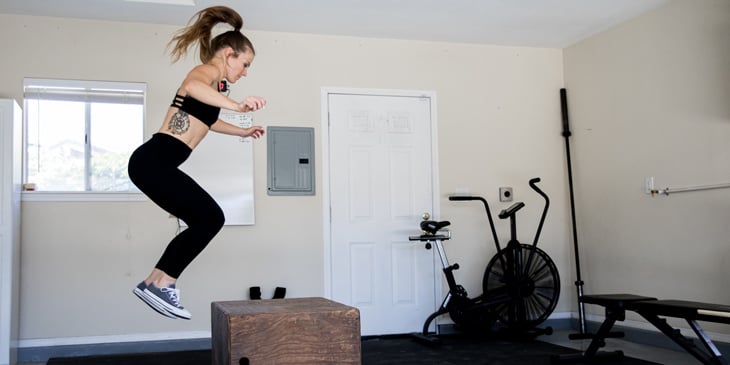
3. Box Step-Up - 3 Sets of 10, each leg
The box step isn’t just a dance move - it’s one that involves your legs, core, and ankles to get you moving. Next time you walk up a flight of stairs, thank all those box step-ups for making it easier for your body to move in a lunge-like position.
Beginner Box Step-Ups
- Place one foot on top of box the other foot on the ground
- With your foot on top of the box, push through your foot to stand tall on the box
- Squeeze lower extremities in movement
- Place the other foot on the top of the box
- Extend through your hips for a full standing position to complete the rep
- Place leading foot back on the ground and follow with other foot
Advanced Box Jumps
- With both feet on the ground, squat down to jump on top of the box
- Bring feet up in a slightly tucked position during jump
- Finish the movement by standing tall at the top of the box with hips extended
4. Pull-Up - 3 Sets of 10
Get your upper body and core activated with this Trifecta Athlete favorite movement. Pull-ups are a staple in helping your back muscles, shoulders, and core move together more efficiently.
Beginner Pull-Ups
- Tie a resistance band around a bar to support body weight
- Place one foot into the hanging band
- Grip the bar slightly wider than shoulder width with your body directly under the bar
- Stay tight through shoulders, lats, core, and legs for a hollow position.
- Begin with activating your lats (think shoulders down) and pull body up
- Continue motion until chin is above the bar
- Keep elbows down and feet together
- Slowly lower your body until in the hanging hollow position
Advanced Strict Pull-Ups
- Remove the band
- Continue to work through pull-ups with bodyweight
- Add a dumbbell between feet for added resistance
5. Bench Dips - 3 Sets of 10
Did you use the sides of a chair to stand up recently? You did a version of a dip! Try incorporating dips into your workouts for more arm strength and a stability challenge for your upper body.
Beginner Bench Dips
- Place your hands flat on surface behind you.
- Shift weight into hands
- With shoulders below your elbows, keep midline tight and push through hands and arms
- Lock elbows lock on full extension
- Lower body back down to the elevated position with your glutes off of ground to complete the rep
Advanced Ring Dips
- Stand between rings at hip height
- Grab ring in each hand with palms facing body
- Hold body weight in arms off of ground
- Lower down through arms without feet touching the ground
- Move chest slightly forward and maintain activated abdominal muscles
- Keep your elbows near your body
- Push through until arms are fully locked out at extension to complete the rep
6. Deadlift - 3 Sets of 10
Ask around and almost everyone will say they love to deadlift. Some might see this as a back exercise. Others will say it’s a leg exercise. We say - it works everything!
The deadlifts mixes power, range of motion, mobility, grip strength - you name it and the deadlift has it. As a functional exercise, it's simply one of the best exercises you can do for your body.
Beginner Deadlifts
- Hold PVC pipe or broom at mid shin with palms facing you
- Bar should be close to shins
- Feet shoulder width apart and pointed slightly outwards
- Bend knees and keep your hips higher than knee while keeping back flat
- Pull lats down towards your hip while keeping core tight
- Push through feet and stand up until the bar passes knees
- Keep your head neutral as you move through the rep
- Hips to be fully extended at top
- Lower the bar the same way you went up stopping at your mid shin.
Advanced Single Leg Romanian Deadlifts
- Stand with your feet slightly apart
- Lift one leg off of the floor
- Without bending knee of the leg planted on the floor, bend at the hips to lower body
- Keep moving until torso is (almost) parallel to the ground
- Move in reverse direction back to standing
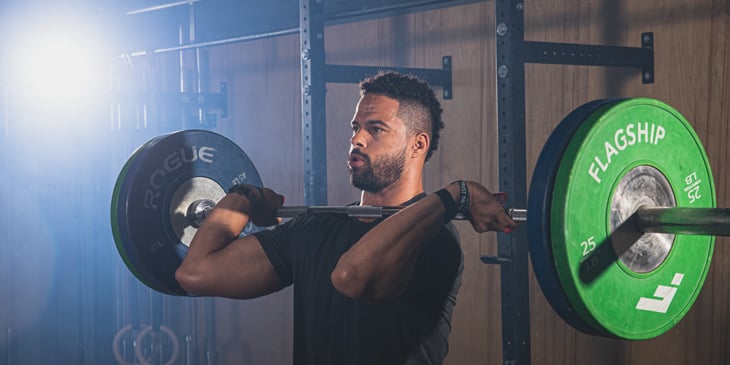
7. Strict Press - 3 sets of 8-10
We have to put things above our head more often than we think. From luggage in an overhead compartment to dishes and groceries. Practicing the strict press will help you improve your overhead pressing and make for a strong back, shoulders, and midline.
Beginner Strict Press
- Hold PVC pipe or a broom in front of shoulders
- Palms facing up and elbows parallel to ground (clean position)
- Evenly distribute weight between both feet and in middle of feet
- Push the bar above head and lock arms out
- Keep your core tight and squeeze your glutes to move in a fluid motion
- Punch head through your shoulders
- Lower bar back to clean position with elbows parallel to ground
Advanced Push Press
- Start in clean position with barbell (elbows parallel to ground)
- Slightly bend knees
- Do not hinge at hips while keeping elbows and chest up
- With a straight bar path, push the bar up above head and straighten legs
- Keep midline tight through motion
- Feet should not leave the ground
- Lower the bar back down to clean position
- Add weight to increase resistance
A Functional Fitness Workout Anyone Can Do
Now let's take what we've learned about functional fitness and get moving!
Before you start, make sure you do a thorough warm-up so your body and heart are ready to perform.
Once ready, set a timer for 10 minutes. Complete 10 reps of each exercise below.
After you’ve completed all 5 exercises, start from the beginning for another round. Count how many rounds and reps you complete as your score. Take a photo and tag @trifecta to share your score with us!
- 10 Box Step-Ups, each leg
- 10 Bent Over Row
- 10 Lunges, each leg
- 10 Deadlifts
-
10 Push-Ups
BONUS: Download the Trifecta App for FREE and get daily functional training exercises to help you torch fat and gain muscle!
You can even more workouts for free with the Trifecta App! Take the guesswork out of what to do at the gym or paying for a coach to write a program for you. Our free app will give you access to a new workout every single day.
You'll have home and gym workouts available for free, every single day. With a full video library, you'll have the information you need to learn how to perform any new exercise. Download the Trifecta App now and jumpstart your functional fitness journey.

